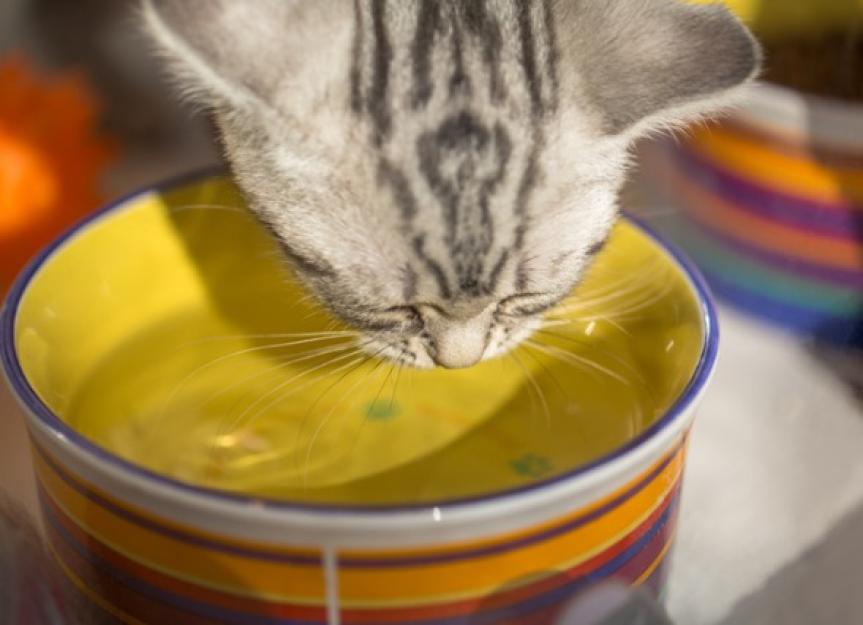Cat likely won’t come back inside because they may be scared, unhappy, or in discomfort. Pet owners must address potential issues and make the proper changes to make their cat feel safe and comfortable inside.
Cats are generally independent creatures, but sometimes, they may not return home even during their usual time. This can be a sign of a problem that the owner should address. It can be concerning if your cat suddenly becomes withdrawn or refuses to come inside, and it can be challenging to figure out why. However, there are a few potential reasons why your cat might be staying away from home. Possible reasons include stress, fear, discomfort, lack of socialization, or injury. This article aims to explore some potential reasons why your cat might not want to come back inside and what actions pet owners can take to bring their pets back home safely.

Credit: www.petmd.com
Understanding Your Cat’S Natural Behavior
Cats are known for their territorial nature. Understanding your cat’s natural behavior is important in comprehending why it refuses to come back inside the house. Exploring the natural instincts of a cat can help you in training your pet. The importance of territory in a cat’s life is significant because it provides a sense of security and comfort.
Different types of cats have varying temperaments, so being aware of the personality of your feline friend can aid in managing its behavior. Always remember, patience and positive reinforcement are vital in training your cat to come back inside the house.
Reasoning Behind Your Cat’S Inclination To Stay Outside
Cats are curious creatures that love to explore the outside world. The fresh air, sunlight, and freedom to move around without restraint offer a sense of excitement and adventure they cannot find inside their home. Common reasons why cats enjoy being outside include the health benefits of spending time in nature, such as fresh air and exercise.
Additionally, being confined indoors can lead to boredom and a lack of mental and physical stimulation, which can cause destructive behavior. To lure your cat back inside the house, try providing a comfortable indoor environment, with plenty of toys and activities to keep them occupied.
Encouraging playtime and providing window perches with views of the outside world can also satisfy their curiosity and provide mental stimulation.
Various Factors That Can Lead To Cat Not Coming Back
Cats are notoriously independent, so it isn’t uncommon for them to wander off for extended periods. However, a cat that refuses to come back home can be worrying, especially if it’s a sudden change in behavior. One factor that can cause a cat to stay away is the introduction of a new animal in the household.
This can trigger territorial behavior and cause the cat to feel uncomfortable. Trauma and stress are also common causes, and dealing with them may require the help of a veterinarian or animal behaviorist. Additionally, health conditions can impact your cat’s behavior, and it’s crucial to schedule a vet visit if you suspect any underlying issues.
In such cases, patience and understanding are essential to help your cat feel comfortable coming back home.
How To Encourage Your Cat To Return Home
Has your beloved cat gone missing and not returning home? Don’t worry! There are a few things you can do to encourage them to come back. Firstly, put your cat’s litter box, food, and water outside your house. This helps them to identify the smell and they might come back.
Secondly, go out and search for your cat in the surrounding areas, ask your neighbors, and put up flyers. Thirdly, try calling your cat by its name and shaking its favorite treat, so they can hear it. Lastly, you can use technological devices like gps trackers or cameras to locate your cat.
Remember to be patient while searching for your furry friend.
Preventative Measures To Avoid Your Cat From Running Away
Cats are known to be independent creatures, but it can be worrying when they don’t return home. Understanding the reasons behind their behavior is the first step to prevent them from running away. Creating a safe and attractive environment is crucial, providing them with their own space, toys, and comfortable cat bed.
Training and bonding with your cat is also essential to prevent them from wanting to leave. Investing time to play, cuddle, and groom your cat can create a strong bond and make them feel loved. By following these preventative measures, you can create a safe and loving environment for your cat and avoid the worry and stress of them not returning home.
Conclusion
After reading through this blog post, it’s clear that there are a variety of reasons why a cat may refuse to come back into the house. Whether it’s due to fear, territoriality, or simply wanting to stay out and explore, it’s important to approach the situation with patience and understanding.
By taking steps like creating a safe indoor environment, using positive reinforcement, and giving your cat plenty of opportunities to explore and play, you can help encourage them to return inside. However, it’s also important to recognize that some cats may have specific needs or preferences that require a different approach.
Ultimately, the key to getting your cat to come back inside is to pay attention to their behavior, emotions, and unique personality, and to work with them in a way that fosters a positive and comfortable relationship.




